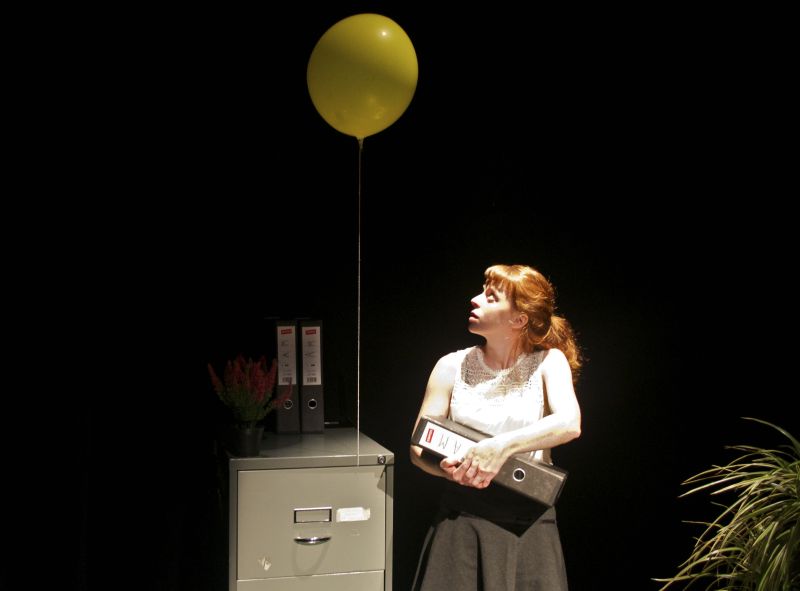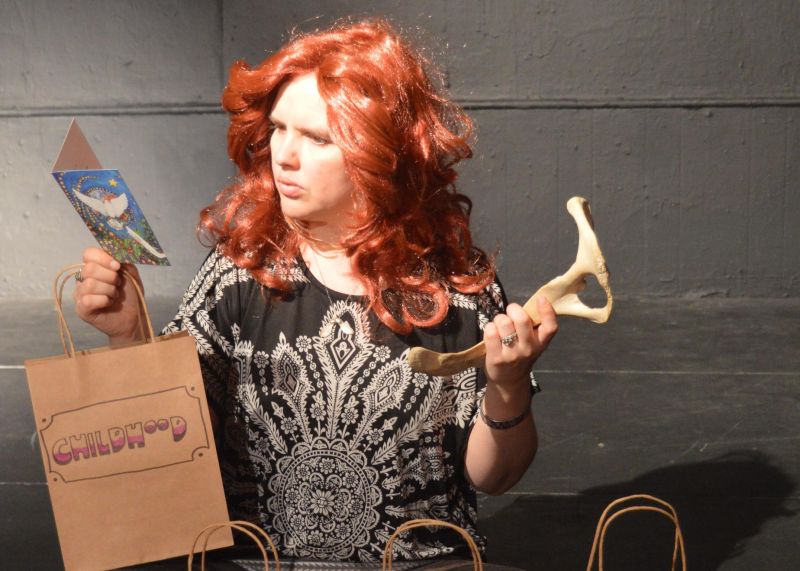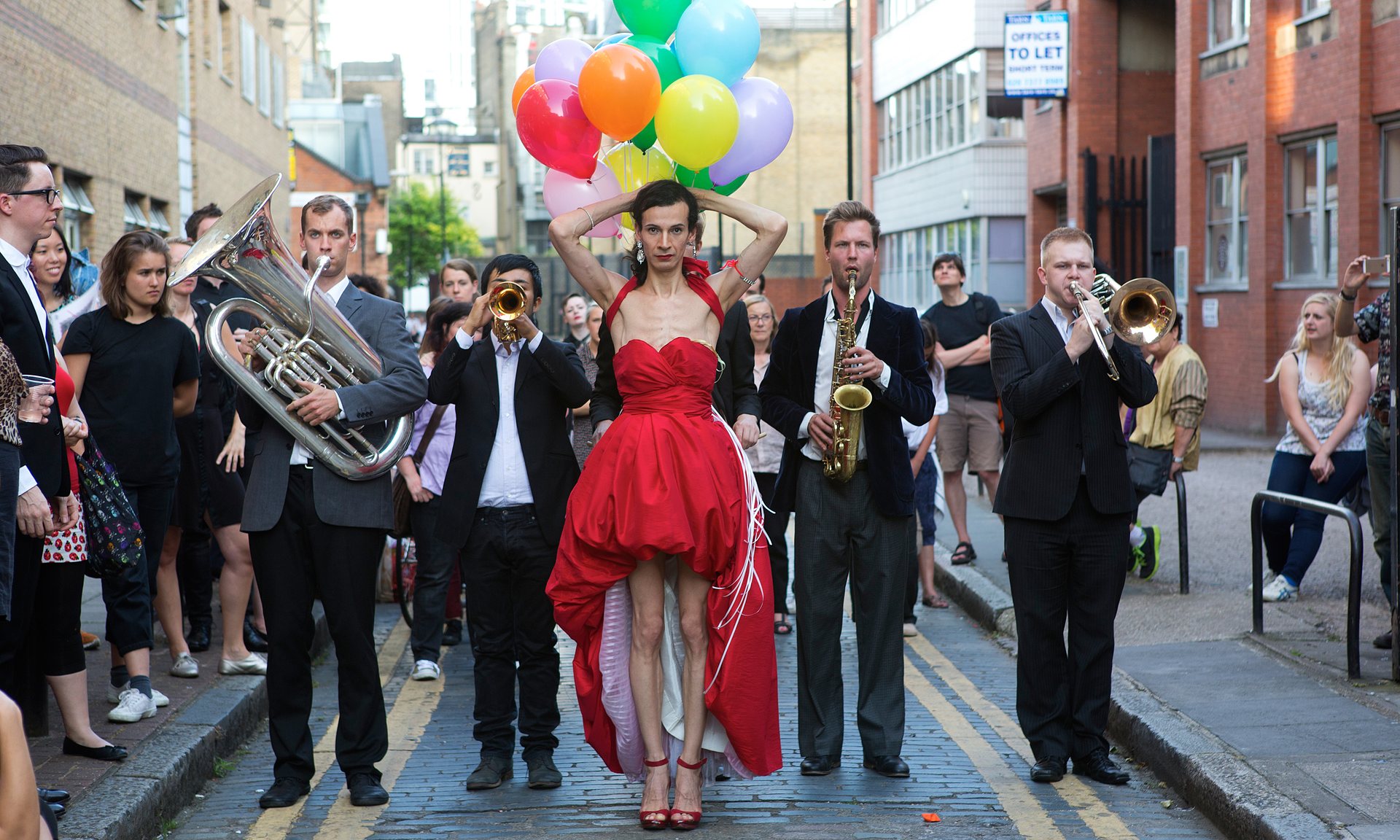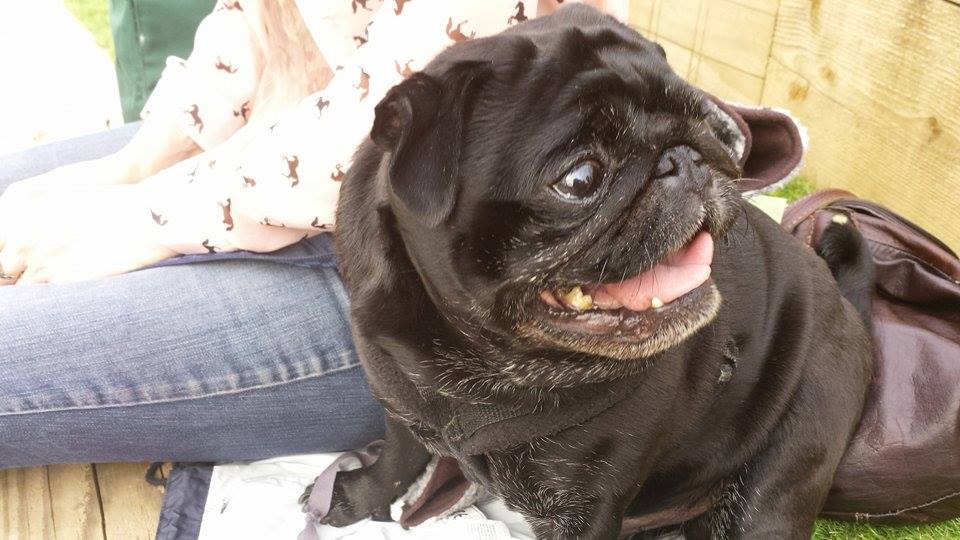So here we are in the queue. Me and Ernie the pug, my doggie companion for the evening, plus his human, Eliza. Ernie makes great noises, almost like talking or singing, a kind of wild monkey-chatter yap. Next to us is Tati, a small and rather elderly lady doggie who stands with dignified poise as passing dogs sniff her bottom. A big-pawed spaniel puppy called Angus is with a human friend who has borrowed him for the evening. He’s pretty wriggly and excited by it all. We’re leafleted by a woman who is putting on an artists’ open house called The Dog Show – eleven artists showing dog-inspired art.
Behind us and in front of us are dogs of all shapes and sizes and colours. Quiet dogs and loud dogs. Jumpy dogs and sniffy dogs. Jittery dogs and calm dogs. As we file in to take our places in the tiered auditorium that is Brighton Open Air Theatre, I look around. Wow! So many dogs all together in one place. What an extraordinary thing. Someone is selling doggy treats. Owners are chatting about their dogs’ diets and habits. I overhear someone say that chihuahuas always have trouble with their teeth, so his dog has had her teeth removed.
There are interesting waves of sound. A bass note from a big dog who barks almost continuously; a mid-range mulch of intermittent barks; and peaking top notes provided by the yaps and barks of all the smaller dogs. Sometimes there’s a lull and sometimes a bark is picked up on and a chorus of barks builds. The twilight bark and then some. It’s great – a marvellous doggy symphony. And this is all before Laurie Anderson has even stepped out onto the stage.
And here she is! Just Laurie, a smile on her face, ‘tape-bow’ electric violin in hand. She moves to the mic behind the keyboard which is set up under the awning. She thanks Brighton Festival and she thanks BOAT founder Adrian Bunting, whose ashes are right there, buried in the centre of the stage area, she tells us. She welcomes all the dogs, and has a special few words for the excitable terriers in the audience. I feel slightly sorry that my grand-dog Mabel, a little terrier that I’m sure Laurie would notice and love, is not with me. Apparently she doesn’t get on with other dogs too well (she lives with four cats so maybe she thinks she’s a cat), so it was felt best not to bring her.
And so, although we’ve already had a pretty full-on immersive experience in the arrival and settling in, the concert proper starts.
Music for Dogs is very much what it says on the (dog food) can. It is music, and it is for dogs. But it is also music by dogs. And of course it is for us humans too. A shared experience. Close to the start of the concert, Laurie repeats the story referenced in the publicity. She was backstage at one of her own concerts, looking out at the crowd, and she said to a colleague: ‘Wouldn’t it be great if you were playing a concert and you look out and everyone’s a dog.’
Being Laurie Anderson, pioneer performance artist who loves a new idea, and a renowned dog-lover, her word became action. Or almost, maybe ideally she’d like just dogs, no humans? The first Music for Dogs concert was at Sydney Opera House in 2010, footage of which featured in Laurie’s Brighton Festival show in May 2015, and again in Heart of a Dog (the beautiful film about the later life and death of her own beloved terrier, Lolabelle, seen in Cinecity 2015). I vowed to myself then that I must get to see this concert. The second Music for Dogs was in January this year at Times Square, in her hometown of New York. The third is this appearance at Brighton Festival 2016, one of a number of shows and events curated by and/or performed by the artist (she is this year’s guest artistic director).
It lasts for twenty minutes, which feels about right. The compositions played include the regular Anderson sounds of treated violin, synth/keyboards, and vocals that fall somewhere between spoken word poetry and song, although at altered frequencies to be especially dog-friendly, with some sections featuring sounds that are only audible to the canine ear. Being human, I can’t say exactly when those occur, but there are certainly moments when most of the dogs seem to prick up their ears and stare intensely at the stage area. There is a lovely moment when she suggests that when speaking to your dog, you might like to change your voice – and demonstrates this with her trademark vocoder (or whatever technology it is these days) which brings her voice down a couple of octaves to a deep and rich growl.
Ernie has by now settled down on his human’s lap, quietly listening with ears pulled back. But Eliza and her partner are musicians, so he’s used to sitting in the corner of the rehearsal room or music studio; it’s all familiar territory for him. Nick Cave is behind us, and his dog is quiet too, so there you go. Tati is also very quiet. I’ve never seen her so attentive, says her human, Nicky – who thinks that Tati would like the other dogs to be quiet and listen to Laurie.
Occasionally we get snippets of stories familiar from other Laurie Anderson shows, or from Heart of a Dog. We hear that when Lolabelle got old, she went blind, and she found this very upsetting, until she was encouraged by Laurie and her partner Lou Reed (who is never mentioned by name, just part of a gently inclusive ‘we’ in the storytelling) to play the piano. She says this as if it’s a kind of normal thing to happen. This is the third of fourth time I’ve heard this story from Laurie Anderson’s lips, live or filmed, but I smile anew on each hearing. She has the classic storyteller’s ability to repeat a story exactly as was before, no embellishment, but as if telling it for the first time. People came round to their home to hear Lolabelle play, she says. I imagine it as a kind of Victorian salon evening.
There is also a very nice little interlude where humans who feel that they look like their dogs are invited to stand up and be recognised. A whippet-thin girl to my right stands up with her greyhound. Yep. Over the other side, a wiry white-and-grey haired woman with lots of energy leaps up with her – yes – perky white-and-grey wire-haired terrier.
At the beginning of the concert, Laurie has promised that the dogs will get a chance to really sound off and join in – and now is the moment. Big dogs, medium-sized dogs, and small dogs all get a turn. Laurie barks at the required pitch to help them out. It kind of works out, although there are a few rebels who just bark all the time, and some who just sit back and watch and listen.
Then suddenly it’s over. Humans applaud, dogs bark. A jazz trio takes to the stage to play exit music, which sounds good but perhaps a little redundant, as the evening feels complete, and no-one pays them much attention.
And off we go into the twilight, a happy bunch of creatures who have come together for a very special experience. It feels an honour to have been there.
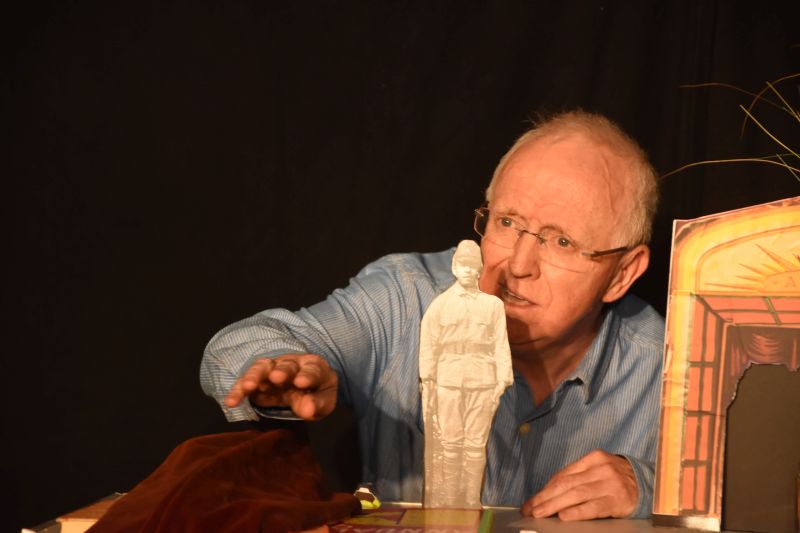 If keeping a secret can corrode the soul, and revealing it liberate, Patrick Sandford must feel a sense of scorching release on performing Groomed to a paying audience for the first time.
If keeping a secret can corrode the soul, and revealing it liberate, Patrick Sandford must feel a sense of scorching release on performing Groomed to a paying audience for the first time.

